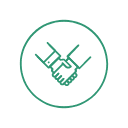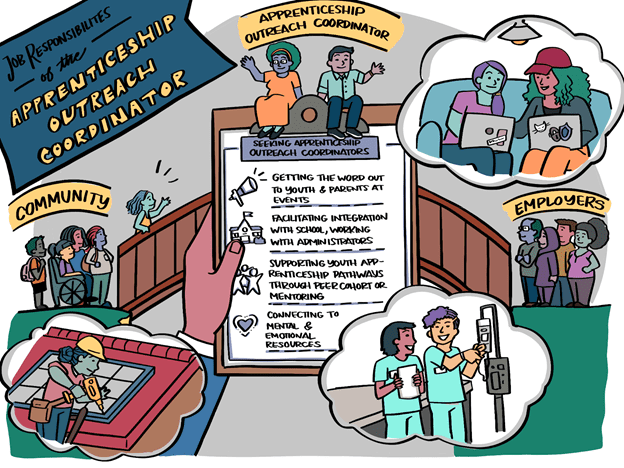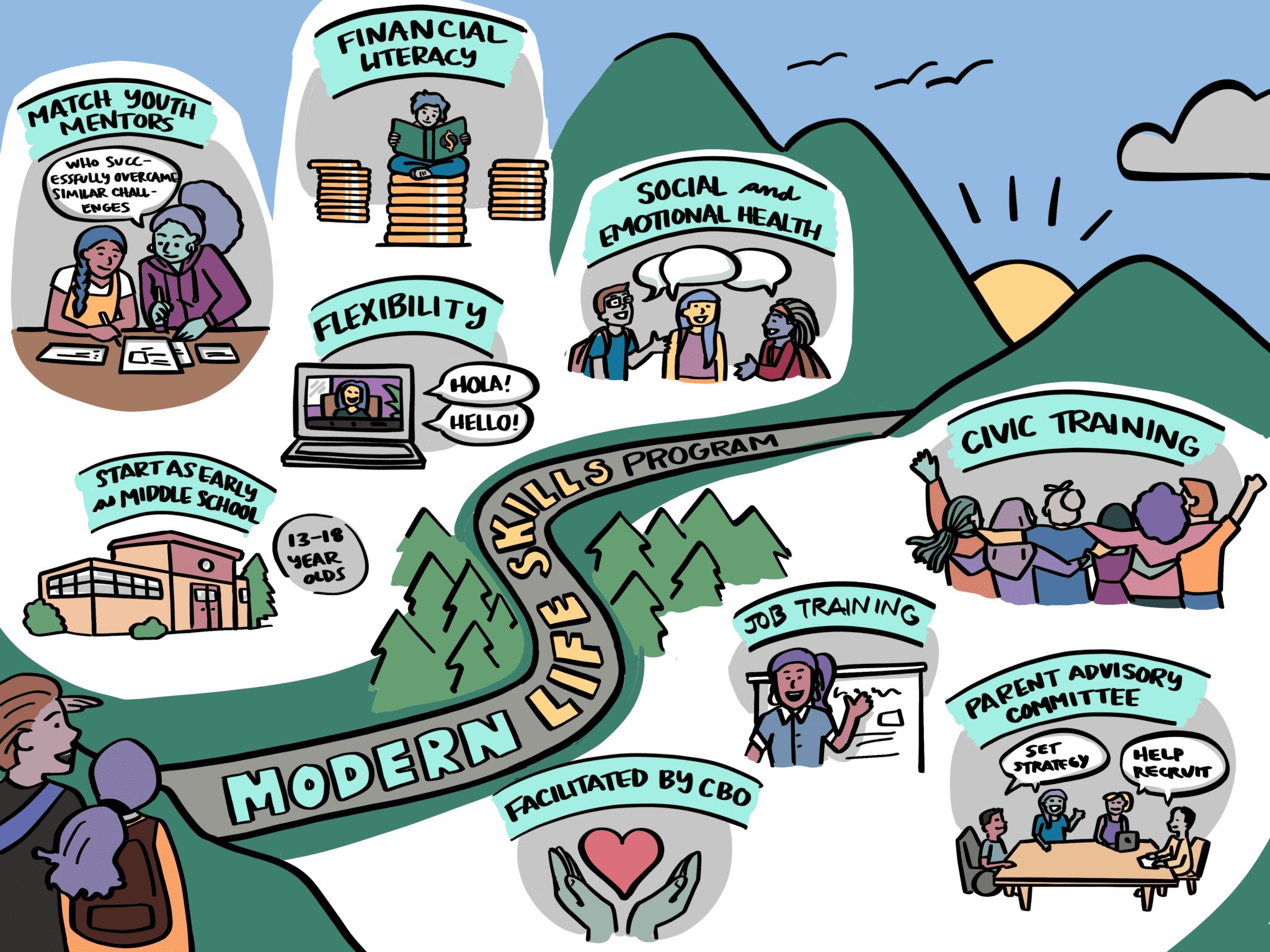Three Design Principles for Listening to Communities
What makes your community listening sessions worthwhile and authentic? Do you learn something new? How do you create trusting, two-way relationships?
As this year reveals the obstacle course many are navigating to stay healthy and safe, government agencies and organizations are turning their ears to the people. They are realizing that resilience and justice come from listening to the voices of people closest to problems. Looking Out, Looking In, and Building Partnerships are three principles to make sure that when you are listening, communities are being heard.

Looking Out: Understand the context that surrounds people's lives and experience. Acknowledge these struggles in your communication, goals and strategy.
Talk to community leaders and examine history, policy, socioeconomics and culture to understand influences on the lives of the demographic group you want to hear. These conversations are the key not only to building understanding, but starting two-way relationships. Beforehand, do your own homework by looking into the context of the problem you are working on. There is often a lot to learn from desktop research, data, and other potential partners within the community that are working on the same issue you are. Connecting with community leaders to better understand the problem and solution space is key.
The River Exercise
Equipped with your research, try this exercise: imagine the issue at hand is a river and people are falling into it. Looking at the situation downstream, ask yourself, what immediate needs are arising for people who are being swept in the current. What struggles arise as they are in the river? How might we provide a life raft? How might we teach people how to swim? Downstream analysis can result in faster change for specific individuals. Then consider the situation upstream. Why are people falling into the river? How might we keep people from falling into the river? Can or should we dam the river? Upstream analysis catalyzes systemic and longer-lasting change for a wider group. In your project, downstream factors may include day-to-day experiences and resource access. Upstream factors include unpacking why those day-to-day experiences happen -- institutional norms, historical factors, economic structures, related policies, etc.
Learning about upstream and downstream factors can help you to understand communities' needs and experiences. Before you go to the community, start with what you already know about the conditions of the river and life in the river. Integrate those insights into the project and let them inform your discussion questions so your sessions can go deeper, uncovering the specific experiences of navigating the factors you listed.
Reflection Questions: How does the historical context play in? What perceptions or dynamics will influence your relationship with this community member What upstream factors can you do desktop research on prior to your listening sessions?

Looking In: Recognize any arising stereotypes or assumptions. Create space for authentic relationships by leading with humility and a desire to relearn assumptions.
Our minds are designed to think quickly, using mental models that have been molded and reinforced by our experience or socialization. Prepare for community listening to trigger strong guardianship from your mind. Your ego may fight against hearing new ideas, especially if these ideas challenge familiar paradigms.
It can be especially difficult to take in someone’s experience if they name harms they may have experienced from you or those who belong to the same social groups that you do. Looking In while you hear and analyze information reduces the power of your biases and increases the integrity of the engagement. Plus, it opens up the possibility for authentic relationships and healing. Channel curiosity and humility. Burst your own bubble, challenging what you imagine your response should be. Acknowledge that you are limited by your point of view, especially around your lived experience in areas that you are relatively privileged. Ask yourself "Why do I think I am right?" and "Why do others think they are right?" Identifying and being accountable around areas of potential ignorance within yourself creates space for the wisdom of community partners to shine. Affirm that others are entitled to their beliefs. Set a goal to be surprised at least once in every conversation.
Reflection Questions: What are your assumptions or beliefs about community members' needs, solutions, or behaviors? Who benefits from the assumptions you have learned? How will you disrupt your own biases, like confirmation bias (interpreting information in a way that confirms your beliefs) or culture bias (making assumptions based on your cultural lens or stereotypes)?

Building Partnerships: Create access for the participation of people with limited resources. Understand expectations. Compensate community time and expertise. Demonstrate transparency. Democratize information gathering and decision-making processes.
Research accessibility needs and ask around to learn successful practices for engaging with the community you seek to work with. For example, busy residents may be reached through street outreach and parents through free childcare; your learnings from listening sessions depend on who was able to participate. Expand your ability to find people who you have not built trust with yet by partnering with community leaders, learning the history of past engagements, and demonstrating respect for the lived expertise of these individuals.
Listening sessions on their own can be extractive. To invest in two way relationships grounded in respect for lived expertise, approach communities as a peer with transparency about the project’s constraints, opportunities for community partners to have decision making power on the project, openness to lifting up their pre-existing priorities within the scope of your work, and meaningful compensation for their time and expertise.
After engagement, determine how you will demonstrate follow-through by continuing the conversation with community members. In order to truly elevate community perspectives, the partnership should acknowledge power dynamics in conversations and in decision-making, finding opportunities to democratize information and share the ability to influence decisions.
Reflection Questions: Who will be crucial to involve in this process? What participation barriers might they have? What are community members signaling or giving up in order to participate? What lived experiences are people bringing into the discussion? How can you defer to the lived expertise in the room?
Take time in the midst of community listening sessions and when reviewing your notes to revisit how you are applying these principles. Reflex Design Collective builds reciprocal and equitable partnerships between institutions and those they serve, so that policies, programs and solutions are co-created with those who have lived expertise. Reflex Design Collective believes that to achieve equitable outcomes, we need equitable processes. This starts with changing how organizations engage with grassroots communities, including co-creating the project approach itself.
These principles were created for the Better Careers Design Group (BCDG), 20 California organizations on a mission to transform how they help people access middle-wage jobs. If you have a similar mission, join the BCDG Learning Community to discover how these organizations put these principles into practice during an 18-month collaborative.


